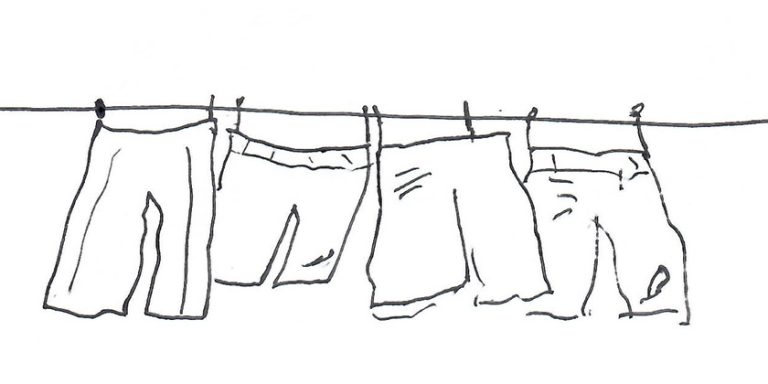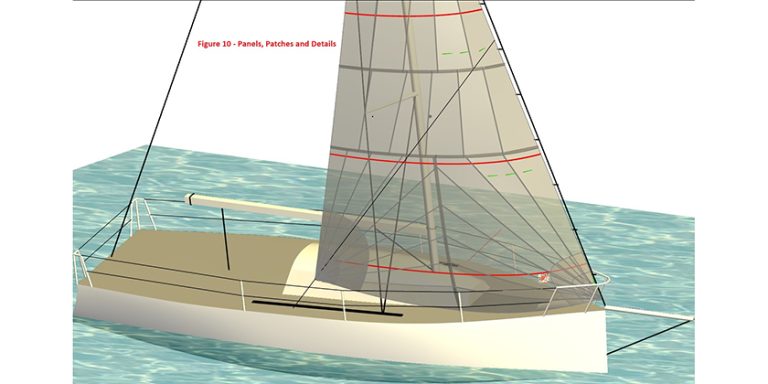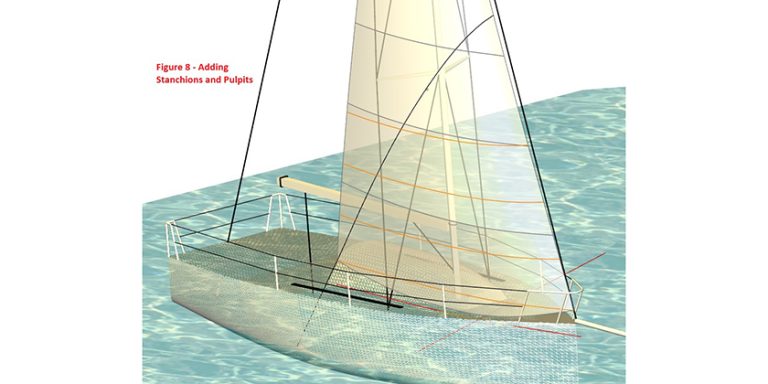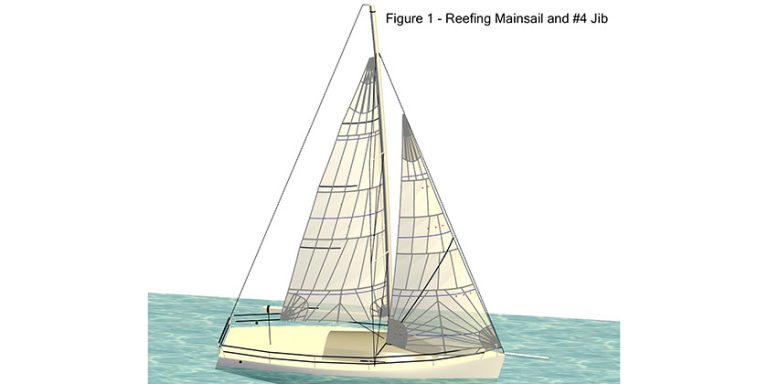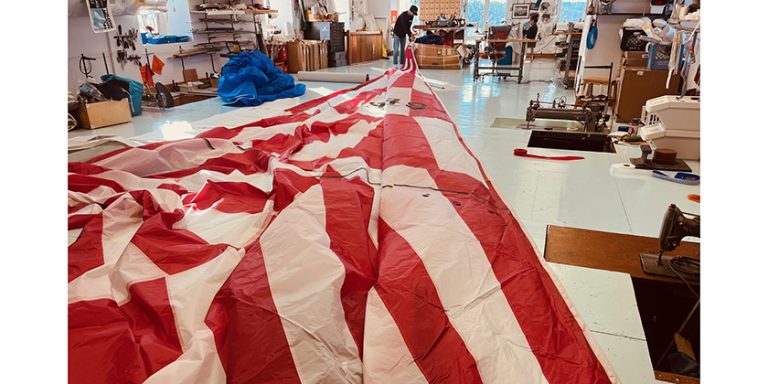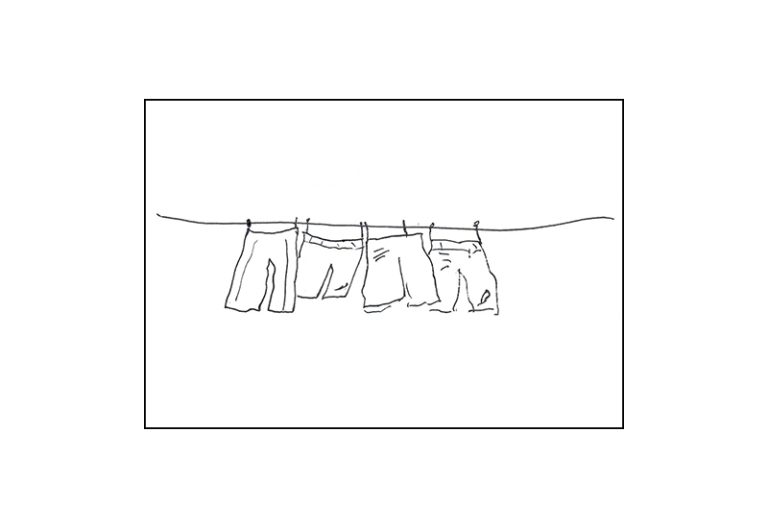Keven Talks Sails: Preparing for Bad Weather – Part 2
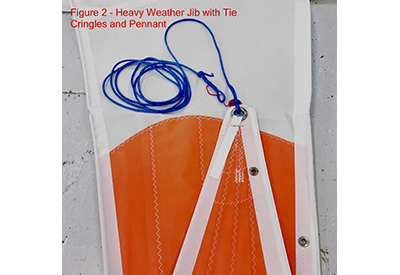
January 18, 2023
Figure 2 – Heavy Weather Jib
In the January 4 issue, Keven took a first look at bad weather and whether or not to reef – read it HERE.
Most sailors just don’t have practice sailing in really windy conditions. Club racers don’t go out if it is more than 25 knots (nor will the race committee). When doing a long-distance cruise or race, you don’t have much option if a squall runs at you. You must be able to shorten sail quickly by reefing or at least dropping the mainsail safely, and getting a heavy weather jib up and flying.
A furling system can roller reef a sail, which isn’t as ideal as a dedicated sail, but it is better by far than flogging a too large jib or not having anything up to control the boat. Unfortunately, many boats don’t have the hardware to efficiently reef. I won’t go into the technicalities of this, but a few things stand out. Cars or slides on mainsails reef more quickly and securely than boltrope luffs, and plastic luff foils may not securely hold a heavy weather jib without safety ties through the sail and around the foil.
With mainsail reefs, it is important to have the tack earrings correctly installed to make sure the reef goes in quickly and doesn’t allow the sail to pull away from the mast and damage slides or even tear mast tracks off the mast.
Left: Figure 3 – Heavy Weather Jib Set on Stay / Right: Figure 4 – Reef Tack Earring
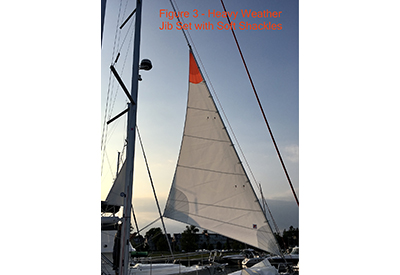
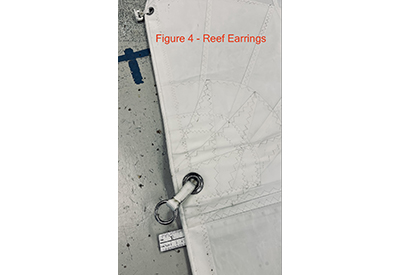
Tactics for a squall
The first plan is usually to reef down, secure the hatches and any loose gear on deck, and sail the boat. This can be uncomfortable and wet, but if you need to keep off of a lee shore, this is your first option.
The second option is to tack the boat into hove to. This is when a reduced area jib sheeted tight and backed, the reefed main trimmed to keep the bow up against the backed jib, and the rudder steering the boat into the wind at very low speed with the boat moving slightly forward but mostly sideways. This can easily be practiced in lighter conditions, and you can learn to manage it very well. I use this all of the time to take a break and make a meal or fix something in windy conditions. The motion of the boat is much calmer than sailing and it lets you clear your head if you are getting stressed (or sea sick).
The last option I consider is running off at 145-150 degrees of true wind angle. This works a wonder if that is where you want to head or have enough room off of a lee shore. This is a great angle for this because it reduces chance of accidental gybes and keeps the boat riding the waves at a controllable angle. If the wind or sea conditions relent, you can always go back to sailing the boat on a more upwind course.
Don’t worry about sailing in heavy weather, just practice and prepare!
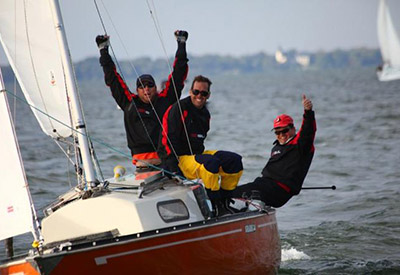 Keven Piper, two-time Shark 24 World Champion, founded Hamilton, ON-based Bay Sails in 1998. Email: baysails@gmail.com
Keven Piper, two-time Shark 24 World Champion, founded Hamilton, ON-based Bay Sails in 1998. Email: baysails@gmail.com

